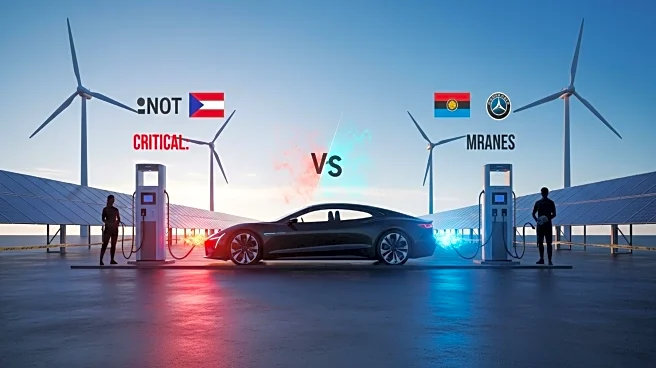What's Happening?
Tesla's stock has experienced a significant surge, trading above $400 per share, driven by factors such as AI and robotaxi developments. However, a less recognized contributor to this growth is Tesla's Energy division. The division has seen record deployments of its Powerwall and Megapack products, despite challenges like tariffs and supply chain issues. Tesla's energy storage deployments reached 9.6 GWh last quarter, with a record $846 million in gross profit. The expansion of Tesla's Megafactory in Shanghai and plans for domestic LFP cell production in the U.S. are expected to further bolster this segment.
Why It's Important?
Tesla's Energy division is becoming a crucial component of the company's growth strategy, offering a buffer against fluctuations in its automotive business. The energy sector's potential for high margins and scalability makes it an attractive area for investors. As utilities in states like Texas and California seek to stabilize grids, Tesla's energy solutions are well-positioned to meet these demands. This diversification beyond automotive manufacturing could sustain Tesla's elevated market valuation and provide a stable revenue stream, enhancing its long-term financial health.
What's Next?
Tesla's continued investment in its energy division suggests a strategic focus on expanding this segment. The company's plans to produce domestic LFP cells could reduce costs and mitigate supply chain risks. As Tesla scales its energy operations, it may attract more institutional investors looking for sustainable growth opportunities. The success of this division could also influence Tesla's stock valuation, potentially maintaining its premium over traditional automakers.
Beyond the Headlines
The growth of Tesla's Energy division highlights a broader shift towards renewable energy solutions in the U.S. As the demand for sustainable energy storage increases, Tesla's innovations could drive industry-wide changes. This development also underscores the importance of energy diversification in achieving energy independence and reducing carbon footprints.










